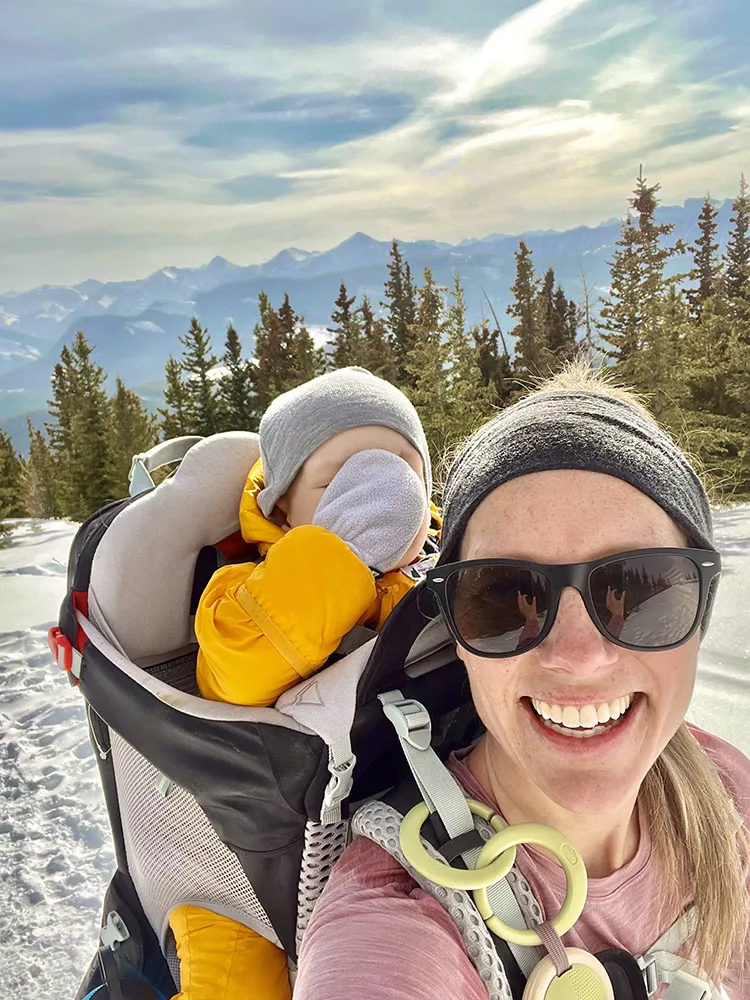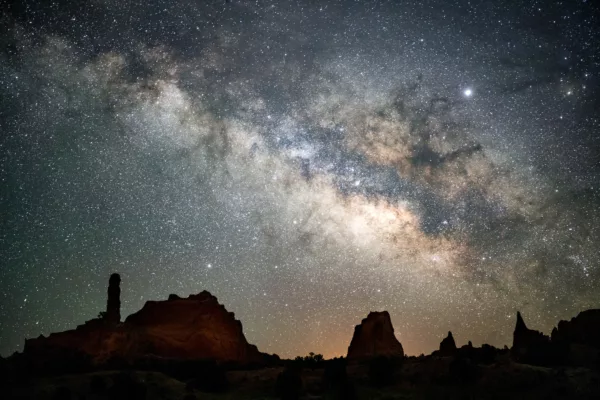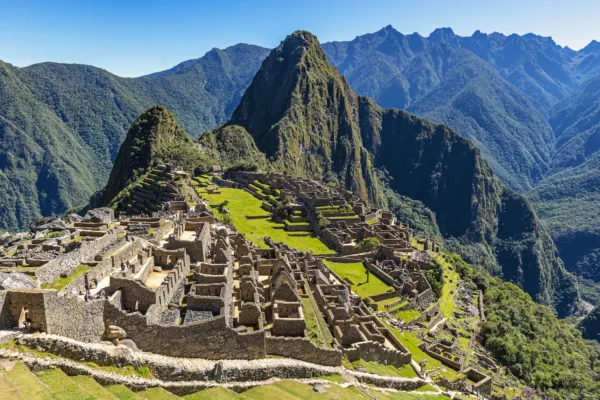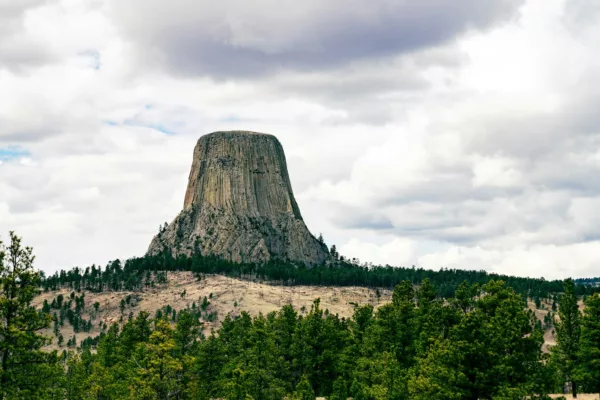Solo Backcountry Camping With a Toddler
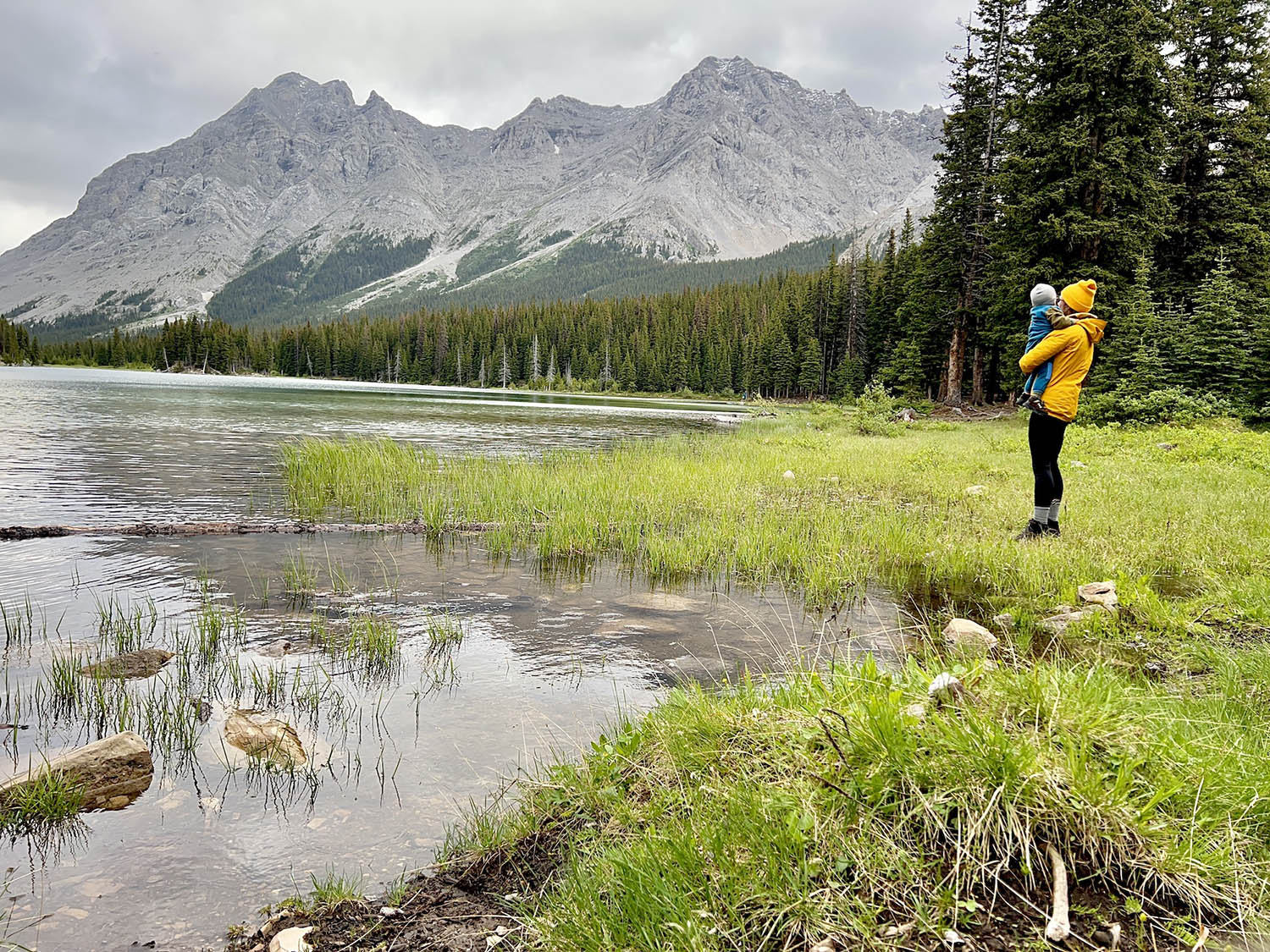
“Finley, come back!”
I whip my head around in time to see a flash of blue fleece disappear into the trees, my errant son doing his best to foil my attempt to hike out after a night of backcountry camping. My backpack, stuffed to the brim with dirty diapers, durable books and too many toddler clothes, is only halfway on, and as I turn to see where my twenty-month-old has gone, I somehow dislodge the safety on my bear spray and shoot the noxious substance into my armpit. In a single moment—a moment that feels like it lasts a year—hell is found in one of the most heavenly places on Earth: Kananaskis, Alberta.
 My first thought as I race to catch up with Finley and rid myself of my clothes—now stained with the sickly sweet and spicy scent of the spray—is this doesn’t feel so bad. The next half hour is a blur of attempting to keep my toddler in one place, wiping up anything that was within the spray zone and shoving everything back into my pack. It’s only when I’m finally hiking out, and Finley is sleeping once again in the cozy cocoon of the carrier, that I realize the right side of my body is attempting to contain a raging inferno. The fiery sensation is one that I appreciate as I watch two grizzlies lumber across the highway when driving home; their presence is a reminder of the wild nature of this place.
My first thought as I race to catch up with Finley and rid myself of my clothes—now stained with the sickly sweet and spicy scent of the spray—is this doesn’t feel so bad. The next half hour is a blur of attempting to keep my toddler in one place, wiping up anything that was within the spray zone and shoving everything back into my pack. It’s only when I’m finally hiking out, and Finley is sleeping once again in the cozy cocoon of the carrier, that I realize the right side of my body is attempting to contain a raging inferno. The fiery sensation is one that I appreciate as I watch two grizzlies lumber across the highway when driving home; their presence is a reminder of the wild nature of this place.
The Elbow Lake backcountry campsite is located on highway 40 in Peter Lougheed Provincial Park, 75 kilometres south of Highway 1 and approximately an hour and a half drive from Calgary. This section of seasonal highway opens on June 15 every year—with it comes a hiker’s access to a magnificent but long undisturbed bear habitat and a much-needed warning to always execute caution when exploring this area and others like it by carrying bear spray (being wary to not spray yourself, of course) and making noise on the trail.

Making enough noise is not an issue when hiking with a spirited toddler. As the campsite is a mere 1.4-kilometre hike (with 120 metres of elevation gain) from the parking area, I give my son a hiking pole and encourage him to walk. Finley has eschewed being carried or contained in any way for the past six months, and he initially runs ahead of me. His delight in his freedom is broadcast through shrieks that are only slightly muted by the fierce wind that pushes grey and swollen clouds into the valley where our campsite awaits.
I grew up hiking and camping, going on my first backcountry trip as a toddler with my dad. My first trips started slow, with long meanders around lakes and scrambling up rocks, but they quickly progressed to more challenging hikes and eventually alpine climbing. These core memories are the beating of my heart; they run through my veins and propel my feet forward when my energy and motivation flag. Decades after that first trip, my dad and I still journey to the mountains together at least once a year, our roles as father and daughter falling away, stripped down to our most authentic selves. Ultimately, this is what drives me to venture out solo with my son: I hope that emulating these sojourns from my childhood will foster a lifelong bond that can withstand even the most difficult of life’s challenges.
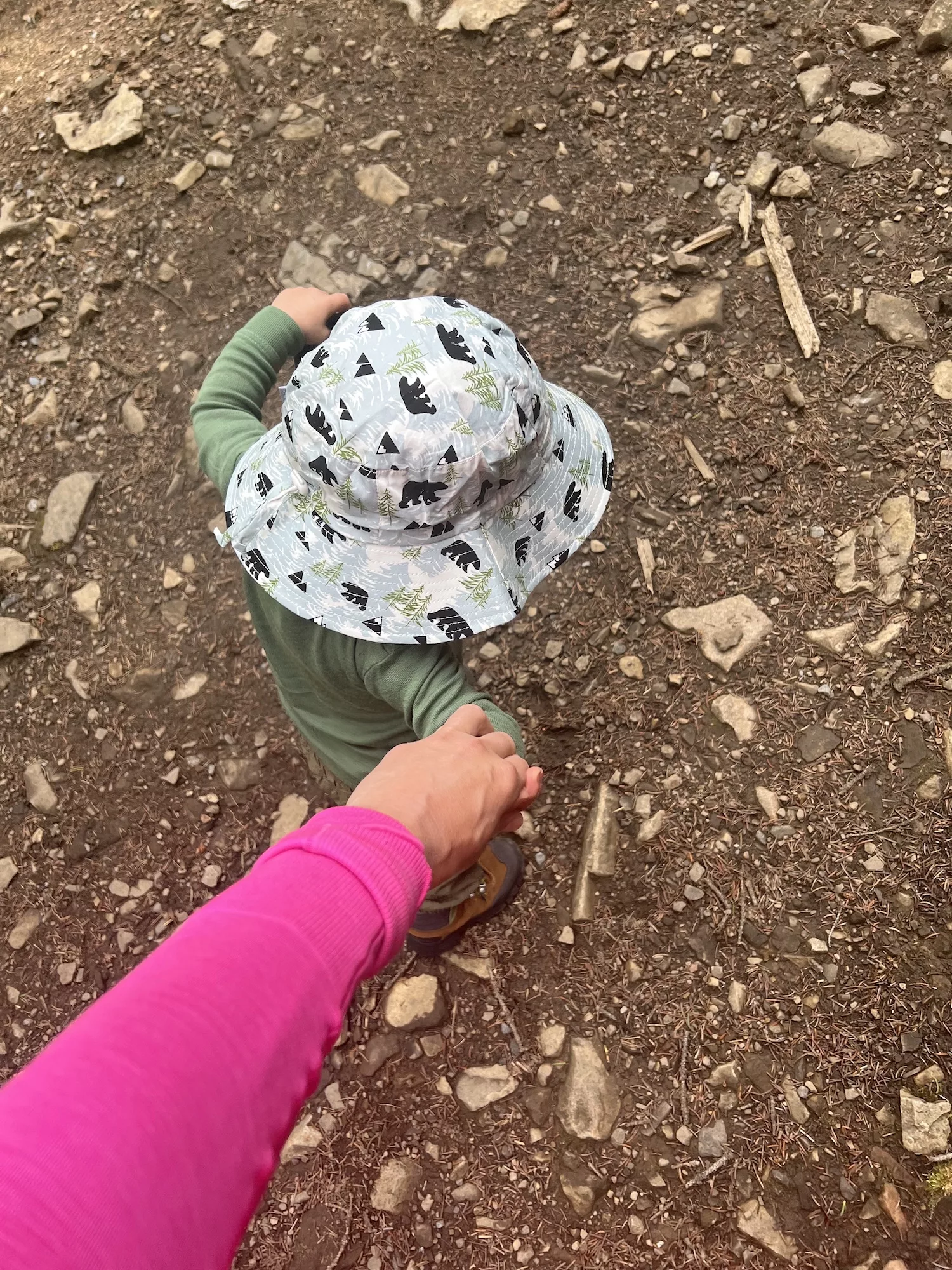
As Finley is still quite young, I am prepared to carry him for part of the hike in and, if all goes well, on hikes to Rae Glacier and Edworthy Falls during our two-day, one night trip. The valley beyond Elbow Lake is a hiking mecca, with family-friendly trails that lead to pristine lakes, rocky cirques and foaming waterfalls. What I don’t anticipate is that it will take us almost two hours to reach the lake, diminishing any chance of a day hike from the campground. Finley’s run has slowed to toddling with frequent stops to inspect the dirt, to brandish fallen twigs at the plant life lining the trail and to chase a chipmunk. As we meander up the uneven path, he grabs my hand when obstacles like a protruding root or large rocks cause him to stumble.
I had always feared I wouldn’t have the patience to hike with a toddler, that my summit fever wouldn’t allow me to develop the ability to take it slow or easy; however, my ambitions for this trip begin to evolve with the love and pride I feel watching Finley hike that first kilometre to the lake. I am learning to shift the focus from what I want to achieve to the development of his abilities and, hopefully, a cultivation of a love for the outdoors.

We arrive at camp and set up at the farthest of the fifteen tent pads to mitigate any late night or early morning disturbance that I have come to expect from my toddler. I put my newfound perspective to the test as Finley “helps” to erect the tent just in time for the now obsidian clouds to begin their watery eruption. I can only laugh after we take cover and I realize that the fly of the tent is flapping loosely in the wind because he took out half of the pegs holding it down when my back was turned. He has planted a metallic garden at the end of the tent pad, the red pegs standing straight as sentinels, forming protection as we stake a claim in nature.
I give up on any semblance of a routine when he refuses to nap in the tent, so enthralled by the unfamiliar yet safe space we have created here. Instead, once the deluge has abated, we make our way back down to the lake and in minutes my wild child has soaked his shoes and is covered in mud. He dances in between the trees, attempts to balance on rocky slabs and learns to say “outhouse” while I make dinner over the course of an hour.

The evening finds us lulled to sleep by the light patter of rain on the tent. The night passes with a few wake ups, the fear of an unfamiliar sleeping environment quickly soothed by cuddles and a drink of water. Finley curls his body into mine and drops back to sleep while I fight to stay awake, wanting to protect this moment, to gather it up and wrap myself in it. His slow breathing feels like the ticking clock of his childhood.
A cacophony of sounds breaks the still morning when it arrives: birds sing harmoniously from the trees and two beavers cause a ruckus down by the lake. The rustle of sleeping bags signals the awakening of the camp. We spend the morning making our way slowly around the lake. I let Finley lead the way, and he takes his time choosing the biggest rocks he can carry to throw into the water. He jumps in every puddle that he sees and claps with delight at the sight of two horses on the trail.

Backcountry camping with a toddler is chaos in slow motion, but it’s the type of chaos that I want to bottle up and tuck away somewhere, unleashing it only when things feel a bit too busy, when life gets a bit too dull. Despite the challenges it presented, and the embarrassing mistakes that I made, I harbour a fierce longing to preserve the essence of this trip: to recall what it was like chasing birdsong through the trees instead of rushing for that first cup of coffee, of finding the magic in steam rising out of boiling water and rediscovering the simple joy of puddles, savouring the feeling of mud between the toes.
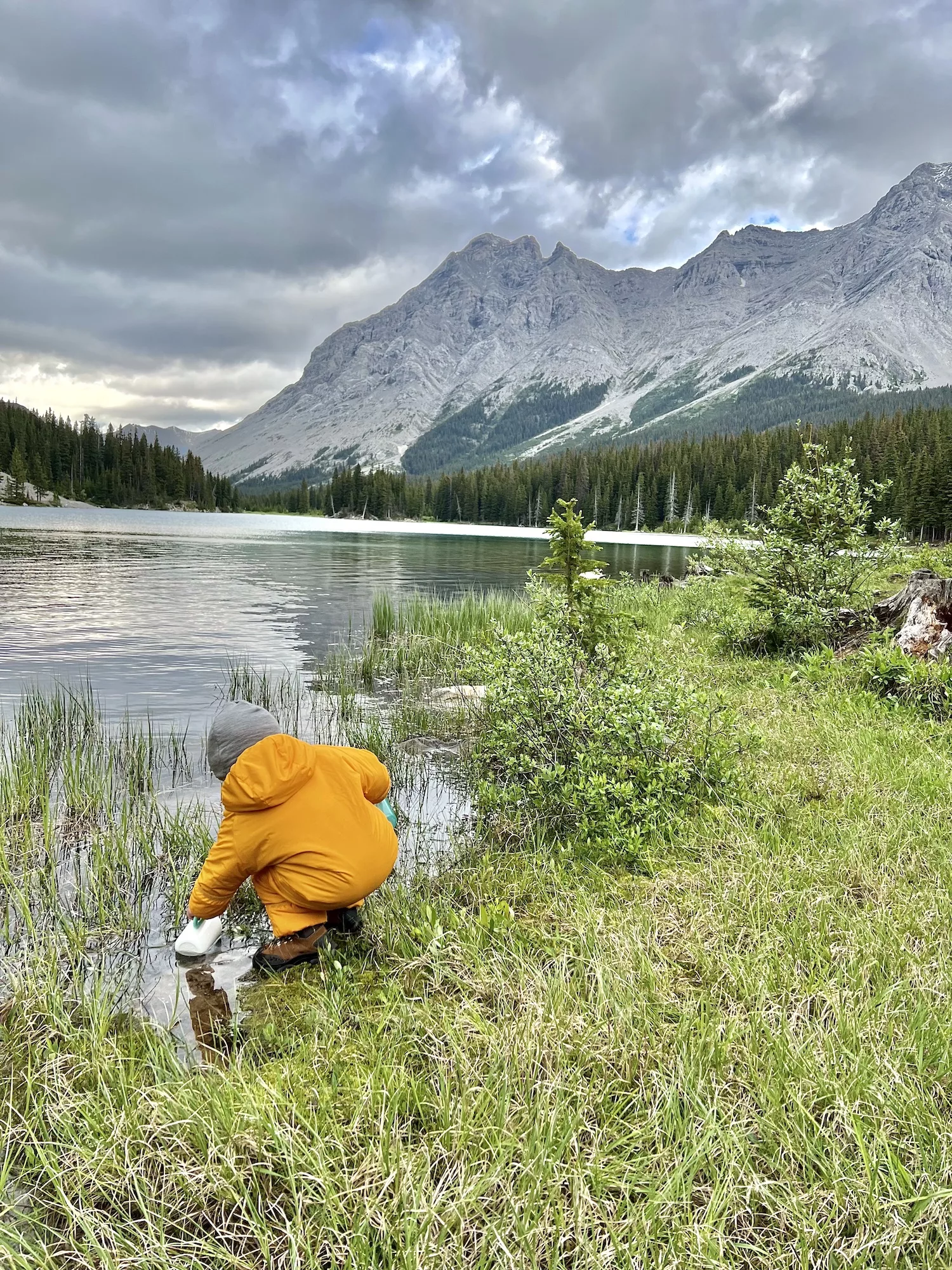
“You’re still here!”
A group of hikers we had encountered earlier in the day—while Finley was tottering over the bridge for the fifteenth time that morning—have returned. He is now down by the creek, intent on choosing only the finest leaves as offerings to the gentle current; he then watches as they drift away, lifting his hand to wave and murmuring a soft “bye bye.”
“Welcome to hiking with a toddler,” I reply.
They laugh and disappear up the trail. When we are alone again, I scoot closer to my son on the bank. I hold him close and inhale the scent of his hair; it’s fresh dug-up earth mingling with the crisp alpine air that is funnelling up the valley. He is nature distilled in my arms. I allow my muscles relax and time slows. I sit. I wait. I do nothing but observe. And it finally feels okay.

My top tips for backcountry camping with a toddler:
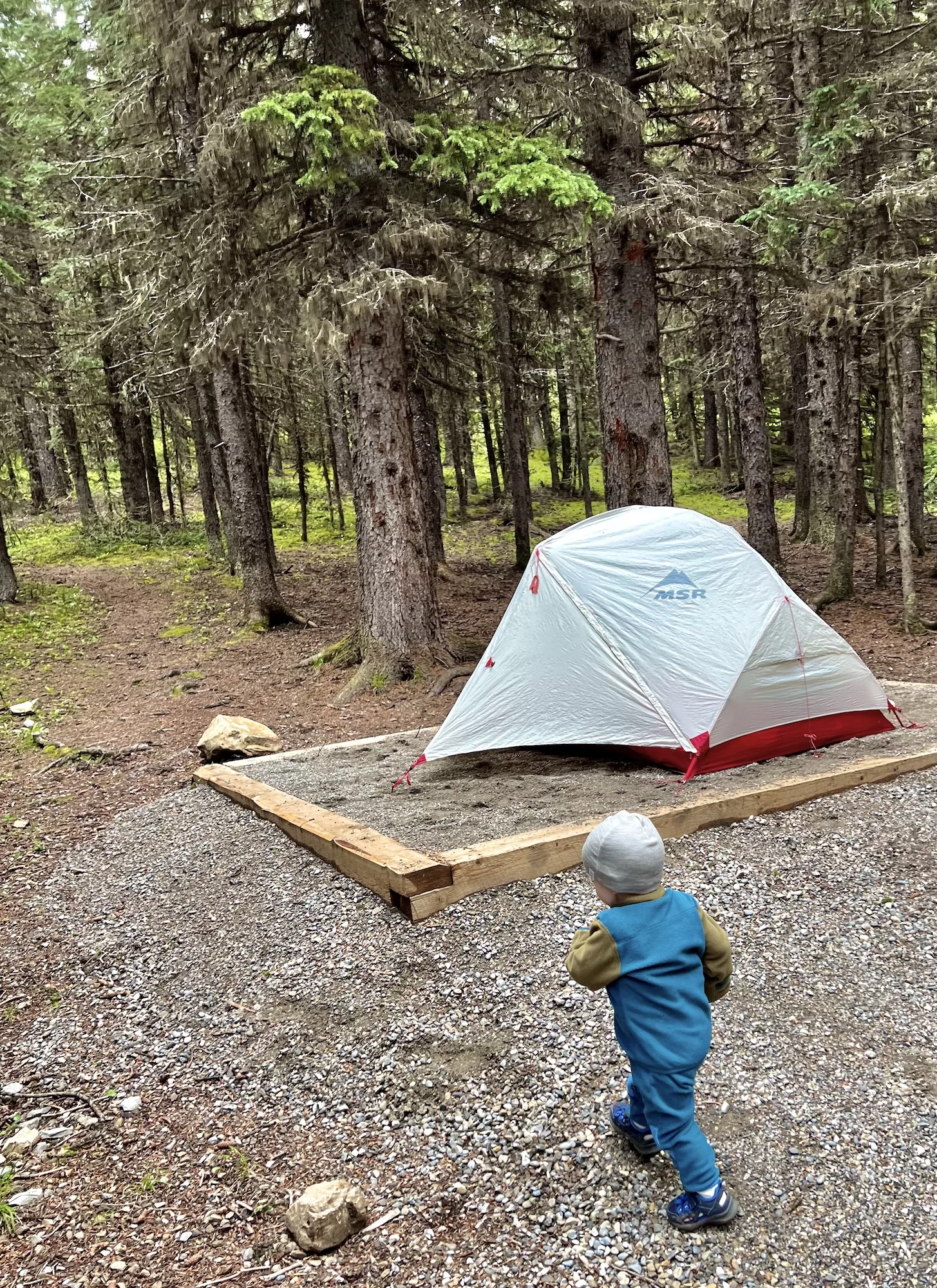
- Choose a campsite that is close to your car so that if you have to make a hasty exit, it is easy to do so.
- Go for one night initially to test the waters and learn what gear and clothing is essential. My toddler was so exhausted the next day that he took four naps instead of his usual one. He also loves water and mud. We went through many outfit and shoe changes because of this, as it was too cold to have him only wearing his quick drying UPF 50 layers. A Newt Suit from MEC is also an excellent solution to this problem.
- Don’t worry about sticking to your routine—everything will be new and exciting for your child and that means you may have to be flexible around naps and bedtimes. Short Canadian summer nights means it’s difficult to create a dark space for sleep. I let my son tire himself out and he usually drops off independently about half an hour after putting his sleeping bag on.
- Let your toddler help you with set up, cooking, clean up and take down—yes, it will take you longer to do everything, but I truly believe in the importance of involving our children in everyday tasks. It is also a wonderful opportunity to talk to them about safety around campgrounds and the principles of leave no trace.
- Slow down and be flexible! Let your toddler lead your exploration of the location in which you have chosen to camp. Encourage play by allowing them to splash in water, cross bridges and scramble up rocks. Naturally, keep them close when camping in bear country, but also just let them explore.
My top gear recommendations for backcountry camping with a toddler:

- Toddler sleeping bag from Morrison Outdoors: Ensures that your child is safe from suffocation and keeps them warm down to minus six.
- Merino wool, fleece and down/waterproof layers: Dress your toddler in the same layers that you would dress yourself in when backcountry camping and hiking. Simply Merino, a local Vancouver company, has high quality 100 per cent merino wool layers for babies, toddlers and children. Smartwool makes merino socks for babies and toddlers. If I can’t find them second hand I get my fleece and down layers from MEC, which has a great selection of outerwear for this age group. Bring more clothes than you think you will need: toddlers get wet, muddy and may blowout their diapers!
- Trail Magik Carrier: For shorter backpacking hikes (you need a minimum 30 L pack with a waist belt for it to function properly) and the BabyBjorn Carrier One Air for longer hikes. I carry my toddler in the Osprey AG Poco Plus only when I have someone along who can help me carry gear, as it only has 26 L of storage space.
- Insulated foam-sleeping pad: I will double this up if it’s going to be a cold night, and this also works perfectly as place for your baby or toddler to rest while on the trail (especially if the trail is wet).
- Garmin inReach Explorer+: I never go anywhere in the backcountry without my inReach. The SOS button and two-way messaging is key to making me feel safer when solo adventuring with my son.
More adventure stories:
Is Backcountry Canoe Camping With a Baby Worth It?
The Happy Camper: Canoeing Canada’s Mississippi River, Part 1
How Folding Kayaks Can Change Lives






